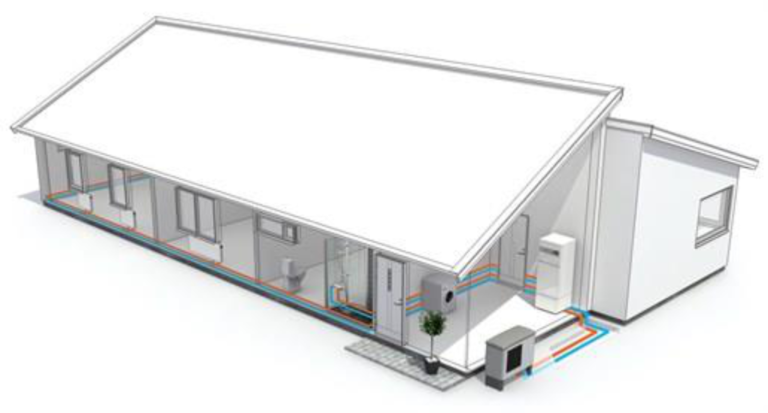Everything starts with the sunrise. The sun heats our atmosphere and the outer layer of the earth’s crust. The energy sent to the earth by the sun in a year is more than 50 times the energy consumed on our planet. For this reason, the sun is an unlimited and inexhaustible source of energy. On sunny days, you feel the thermal energy of the sun in your body. In fact, there is always enough thermal energy in the air, even on cold winter days and nights. This applies not only to Florida or southern Spain, but also to countries like Sweden or Norway, where there are thousands of homes already using heat pumps.
The amount of emissions released by heat pumps is much lower compared to conventional heating systems. Since heat pumps consume very little energy, CO2 emissions are also low, limited only by the electricity required by the compressor.
Less Energy Consumption
Efficient
Low Installation Cost
Flexible Application Option
Uninterrupted Comfort
Totally Safe

The amount of emissions released by heat pumps is much lower compared to conventional heating systems. Since heat pumps consume very little energy, CO2 emissions are also low, limited only by the electricity required by the compressor.
Despite all these advantages, heat pumps remain a mystery to many people. The concept of “heat” transfer from a cold source to a cold indoor environment may not make sense to everyone at first sight. However, heat pumps don’t have any magic.
A heat pump requires only outdoor air, two heat exchangers (one to absorb heat and the other to transfer heat to the space) and a relatively low amount of electrical energy to keep the system running.
The heat pump provides energy from the environment. The heat pump receives energy at a certain temperature, raises that temperature and then transfers it to a fluid. In the heat pump system, this fluid is the water circulating in low temperature radiators, underfloor heating system or fan coil units.
Refrigerant is a special liquid that evaporates at a temperature lower than the outside temperature. The refrigerant meets the outside air in copper pipes and absorbs the thermal energy from the air. This is the first heat change in the system. At this stage, the fluid evaporates with the heat energy absorbed from the outside air. When you wet your finger and blow air into the wet spot, this happens when the wet surface of your finger gets coldhissedebilirsiniz.
The refrigerant passes through the evaporator and takes the heat from the air, then goes into the gas phase. After this step, the compressor is activated. When you compress a gas, the heat energy in the gas phase is concentrated together with the molecules and consequently the temperature rises. As you inflate the wheel of your bike, you feel the air inside the wheel warms up. The temperature in the heat pump’s compressor rises substantially compared to the initial temperature of the source (outdoor air). The second heat exchange occurs in the heated environment when the compressed gas enters the condenser, which is a colder surface than the gas itself. Finally, the gas condenses and releases heat, which will warm your home.
The condensation process is the transformation of the gas back into a liquid state. The refrigerant passes through an expansion valve, reaches its initial pressure and the whole process starts over.

